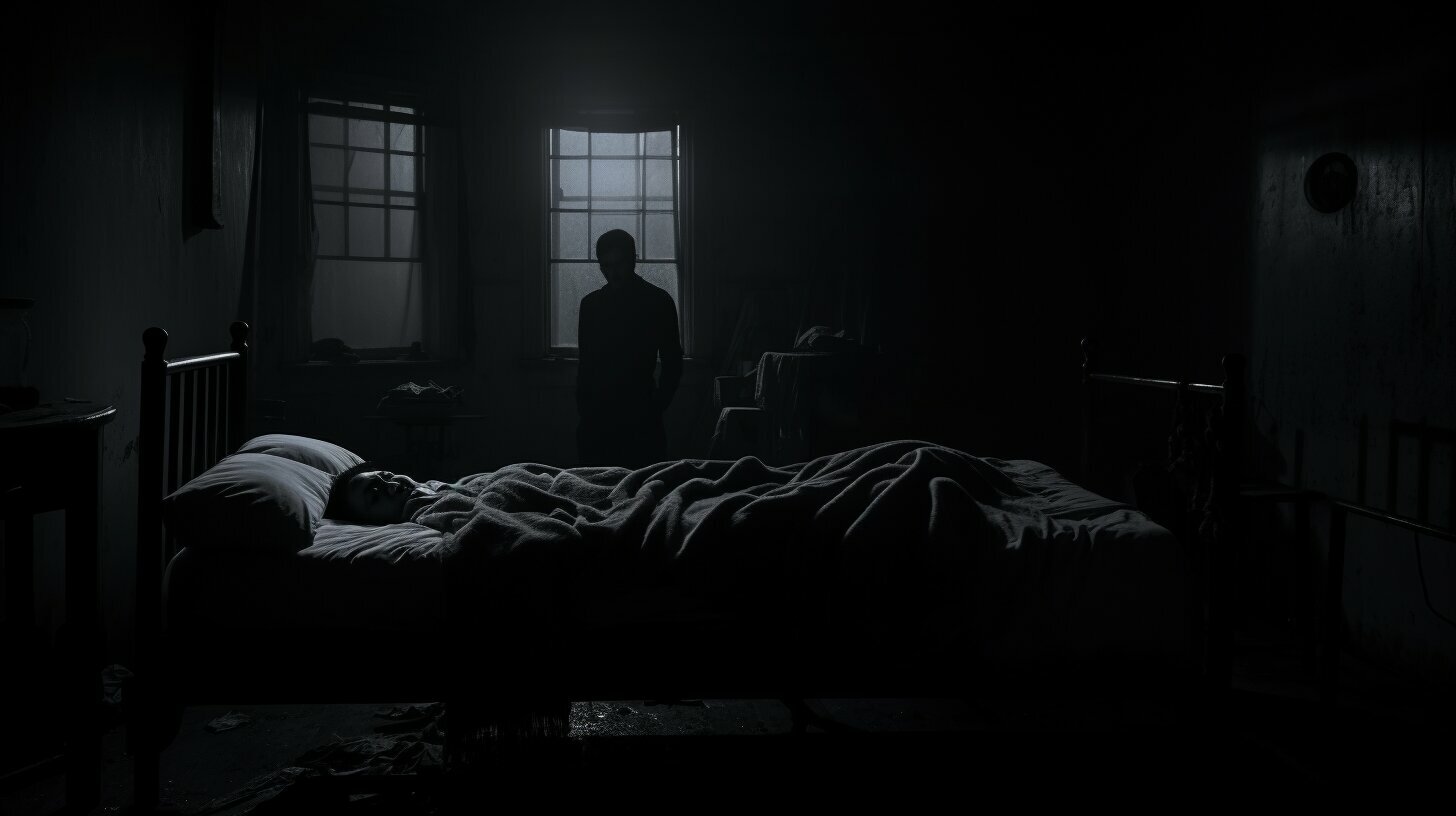Have you ever woken up in the middle of the night unable to move, with a sense of fear or dread looming over you? Or perhaps you have experienced a dream where you are fully aware that you are dreaming, able to control the dream’s outcome. These two sleep experiences are known as sleep paralysis and lucid dreams, but are they the same?
In this section, I will explore the differences and similarities between sleep paralysis and lucid dreams, providing you with a better understanding of each phenomenon. It’s important to recognize the dissimilarities between these two experiences to avoid confusion or misdiagnosis.
Key Takeaways:
- Sleep paralysis and lucid dreams are two distinct sleep experiences.
- Understanding the differences and similarities can help distinguish between the two.
- Sleep paralysis involves the inability to move during sleep, while lucid dreams allow for control over the dream.
- Further exploration and research is encouraged to gain a better understanding of these fascinating sleep phenomena.
What is Sleep Paralysis?
Before we dive into the differences between sleep paralysis and lucid dreams, let’s first explore what sleep paralysis is exactly. Simply put, sleep paralysis is a phenomenon in which an individual is unable to move or speak while falling asleep or waking up.
This experience can be incredibly distressing, as the individual may feel as if they are trapped and unable to escape. They may also experience hallucinations, often in the form of sensing an ominous presence in the room.
While the exact causes of sleep paralysis are not fully understood, it is believed to be related to the body’s natural sleep cycles. During rapid eye movement (REM) sleep, the body is temporarily paralyzed to prevent movement and prevent injury. In the case of sleep paralysis, it is believed that this paralysis persists even after the individual has woken up.
In some cases, sleep paralysis may be linked to underlying sleep disorders such as narcolepsy. It may also be triggered by stress, anxiety, or a disrupted sleep schedule.
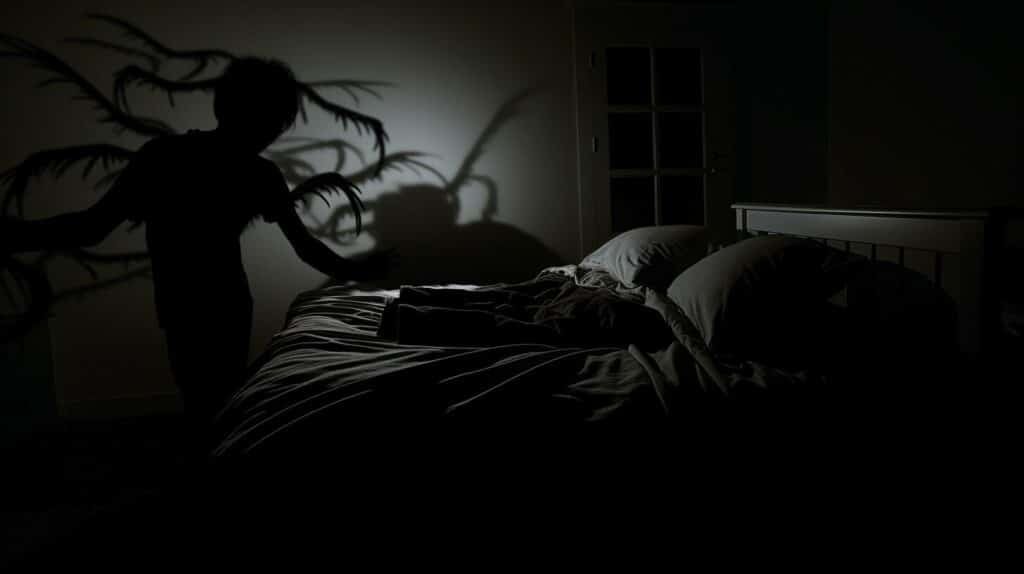
Image source: https://seowriting.ai/32_6.png
Exploring Lucid Dreams
Lucid dreams are a fascinating phenomenon that occurs during the REM (rapid eye movement) stage of sleep. During a lucid dream, the dreamer becomes aware that they are in a dream and may be able to control certain aspects of the dream world.
What sets apart lucid dreams from regular dreams is the level of consciousness and awareness that is present. In a lucid dream, the dreamer may be able to recognize that they are dreaming, which can be a liberating experience.
Lucid dreams are often described as vivid and realistic, with the dreamer being able to interact with their dream environment as if it were real. This can include anything from flying, exploring new places, or even meeting with people who have passed away.
The experience of having a lucid dream can be thrilling, and there are many techniques that individuals can use to increase the likelihood of experiencing one. These techniques include reality checks, dream journaling, and meditation.
While there may be some overlap between sleep paralysis and lucid dreams, they are distinct phenomena with different characteristics and experiences. However, some individuals may be able to use techniques for inducing lucid dreams to alleviate the negative effects of sleep paralysis, such as fear and anxiety.

Overall, lucid dreams provide a unique and surreal experience that allows individuals to explore the boundaries of their imagination and consciousness. Whether you’re looking to gain control over your dreams or simply want to experience something truly extraordinary, lucid dreaming is a phenomenon that should not be overlooked.
The Key Differences
While sleep paralysis and lucid dreams may have some similarities, they are also distinct in several ways. The key differences include:
| Sleep Paralysis | Lucid Dreams |
|---|---|
| Occurs during the transition between sleep and wakefulness | Occurs during REM sleep |
| Individual is unable to move or speak | Individual has control over their actions and surroundings |
| Often accompanied by feelings of fear or anxiety | Can be directed by the individual to create positive experiences |
| May involve hallucinations and a sense of a presence in the room | May involve enhanced sensory experiences and greater awareness |
| Can be triggered by sleep deprivation, irregular sleep patterns, or stress | May occur spontaneously or be induced through certain techniques |
While these differences provide a clear distinction between sleep paralysis and lucid dreams, it’s important to note that these experiences can also vary greatly from person to person. Some individuals may have more control over their sleep paralysis, while others may experience hallucinations during lucid dreams. Additionally, the causes and triggers for these experiences can be complex and unique to each individual.
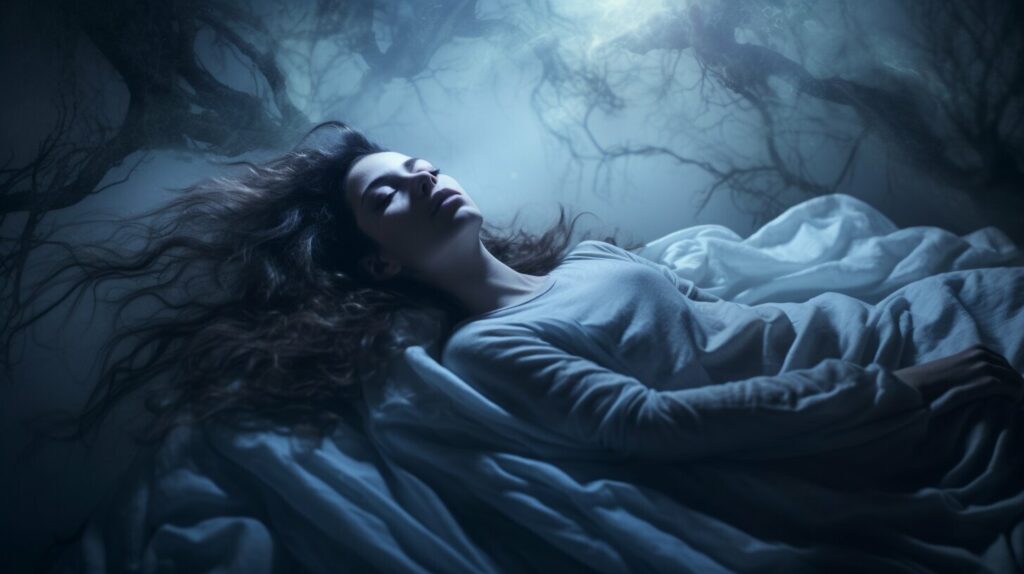
The Common Ground
While sleep paralysis and lucid dreams are distinct phenomena, they do share some common ground. One similarity is that both experiences are associated with altered states of consciousness during sleep. Another parallel is that individuals who encounter sleep paralysis or lucid dreams often report a sense of being awake while their bodies are still asleep.
Furthermore, both sleep paralysis and lucid dreams can be induced through lucid dreaming techniques, such as reality testing and keeping a dream journal. Individuals who have experienced both phenomena may use these methods to intentionally induce either experience.
It is important to note, however, that while there are similarities between sleep paralysis and lucid dreams, they are not the same thing. Sleep paralysis is often associated with feelings of fear and being trapped, while lucid dreams are typically associated with enjoyment and control.

Understanding the Relationship
As we have explored sleep paralysis and lucid dreams separately, it is natural to question their relationship with each other. While their experiences and characteristics are distinct, some research suggests that there may be a connection between the two.
A study published in the Journal of Sleep Research found that individuals who frequently experienced sleep paralysis were more likely to have lucid dreams, and vice versa. However, the study also noted that not all individuals who experienced one phenomenon experienced the other.
It is also important to note that some individuals have reported using sleep paralysis as a tool to induce lucid dreams. By intentionally triggering sleep paralysis, they are able to control their dream state and consciously enter a state of lucidity.
Further research is needed to fully understand the relationship between sleep paralysis and lucid dreams. However, it is clear that these two phenomena have a complex and intriguing connection that warrants further exploration.

Causes and Triggers
Understanding the potential causes and triggers for sleep paralysis and lucid dreams can shed light on why these experiences occur. While the specific causes may vary between individuals, there are certain factors that have been identified as potential contributors.
| Sleep Paralysis | Lucid Dreams |
|---|---|
| Disruptions in sleep patterns: Sleep paralysis is often linked to changes in sleep patterns, whether it be from jet lag, shift work, or insomnia. | Inconsistent sleep: Lucid dreams may occur when an individual experiences inconsistent or disrupted sleep, whether due to sleep apnea or other sleep disorders. |
| Stress and anxiety: Stress and anxiety have been identified as potential triggers for sleep paralysis, as episodes often occur during periods of heightened stress or anxiety. | Increased self-awareness: Lucid dreams may occur when an individual is more self-aware during sleep, often due to stress or anxiety. |
| Medications: Certain medications, such as antidepressants or medications for ADHD, have been linked to an increased risk of sleep paralysis. | REM sleep: Lucid dreams tend to occur during REM sleep, which is the stage of sleep associated with rapid eye movement and heightened brain activity. |
While these factors may contribute to the onset of sleep paralysis and lucid dreams, it is important to note that not everyone who experiences these phenomena will have experienced these triggers. Additionally, researchers are still exploring the potential links between certain triggers and the experiences themselves.
Further research is necessary to fully understand the causes and triggers behind sleep paralysis and lucid dreams. By identifying these factors, we can develop a better understanding of how these experiences occur and how they can be managed or controlled.
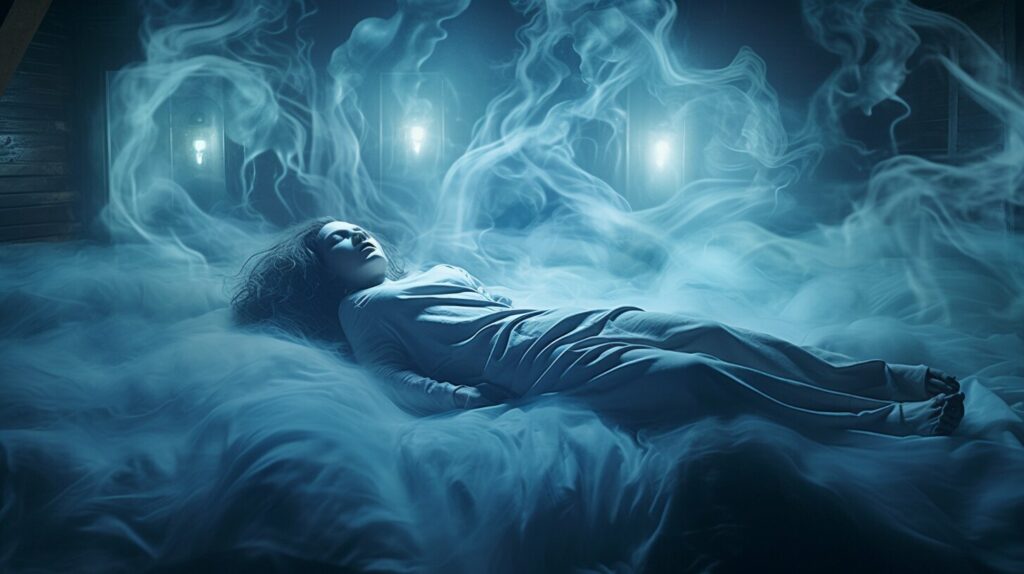
Personal Experiences and Testimonials
As I continue to research sleep paralysis and lucid dreams, I cannot help but be intrigued by the personal experiences and testimonials shared by individuals who have encountered these phenomena.
One person, who wishes to remain anonymous, shared their experience with sleep paralysis, stating: “I woke up in the middle of the night and couldn’t move. I felt a heavy weight on my chest and saw a dark figure standing at the foot of my bed. It was terrifying.”
Another individual, who has had multiple lucid dreams, described their experience as follows: “In my dream, I suddenly realized that I was dreaming. It was amazing to be able to control the dream and do anything I wanted. I could fly, talk to animals, and visit exotic locations.
While these experiences are vastly different, they both highlight the unique and subjective nature of sleep paralysis and lucid dreams.

It’s important to note that not everyone has positive experiences with these phenomena. Some individuals report feeling trapped and frightened during episodes of sleep paralysis, while others struggle to maintain control and may quickly wake up from a lucid dream.
Despite these challenges, many individuals continue to seek out these experiences, as they offer a sense of control and transcendence that is not often found in the waking world. It’s fascinating to hear about these experiences and learn more about the intricacies of sleep and dreaming.
Scientific Research and Studies
Scientific research has been conducted to gain a better understanding of sleep paralysis and lucid dreaming. Through studies and experiments, researchers have uncovered fascinating insights into these unique sleep experiences.
One such study explored the relationship between sleep paralysis and lucid dreaming. Researchers found that individuals who experienced frequent episodes of sleep paralysis also reported more lucid dreams than those who did not experience sleep paralysis. This suggests a potential link between the two phenomena, though more research is needed to fully understand this connection.
Another study examined the potential causes of sleep paralysis. Researchers found that disruptions in the sleep-wake cycle and irregular sleep patterns were common factors in individuals who experienced sleep paralysis. Additionally, individuals with mental health conditions, such as anxiety and depression, were more likely to experience sleep paralysis.
In terms of lucid dreaming, studies have shown that techniques such as reality testing and dream journaling can increase the likelihood of having a lucid dream. These techniques involve becoming more aware of one’s surroundings and questioning whether they are dreaming or awake, which can lead to greater control over the dream state.
Overall, scientific research and studies have shed light on the potential causes and connections between sleep paralysis and lucid dreaming. As more research is conducted, we may continue to gain a deeper understanding of these fascinating sleep phenomena.

Seeking Control and Transcendence
As I’ve explored the fascinating experiences of sleep paralysis and lucid dreams, I’ve discovered that many individuals seek to encounter these phenomena for the sense of control and transcendence they provide.
For some, sleep paralysis and lucid dreams offer a way to break free from the limitations of reality and dive into an alternate state of consciousness. This can be an exhilarating and transformative experience, one that allows individuals to tap into their innermost thoughts, emotions, and desires.
Others may view sleep paralysis and lucid dreams as a way to gain control over their subconscious mind. By consciously manipulating their dreams, they can potentially overcome fears, work through emotional conflicts, or simply explore their own psyche.
Regardless of the reason, it’s clear that sleep paralysis and lucid dreams have the potential to offer a unique and powerful experience to those who seek them out.
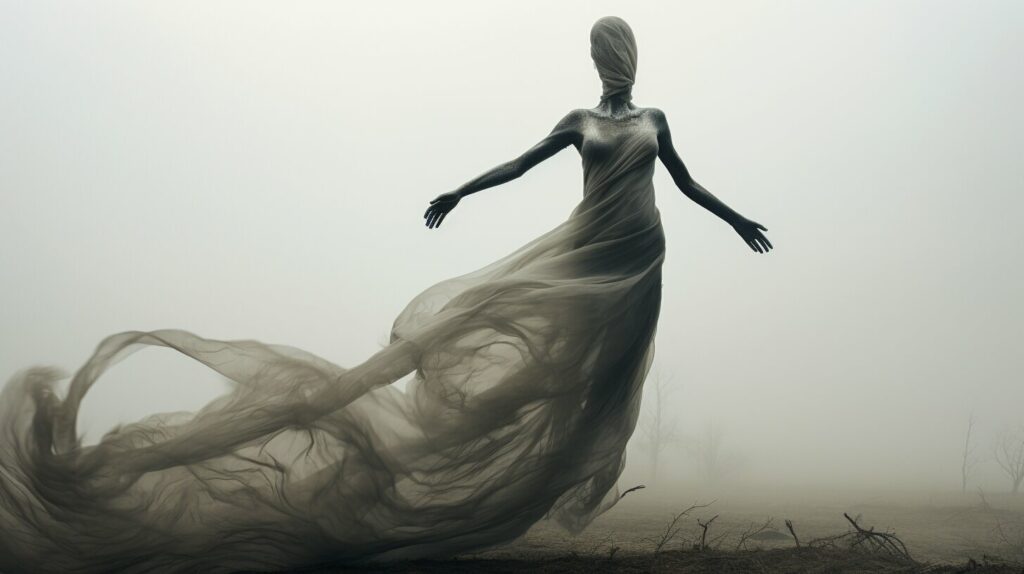
Exploring the Boundaries
As I delved deeper into the world of sleep paralysis and lucid dreams, I found myself questioning the limits of our current understanding. What if there is more to these phenomena than we realize? What if there is a realm of consciousness that we have yet to explore?
I began to research the experiences of individuals who claimed to have encountered beings or entities during their sleep paralysis or lucid dream episodes. While these could be explained as simply hallucinations or vivid imaginations, there are those who believe that they may have encountered something beyond our physical world.
The notion of exploring the boundaries of our consciousness and understanding of the world is not a new one. Many ancient cultures, such as the Egyptians and Greeks, believed in a realm beyond our physical reality, accessible only through meditation or altered states of consciousness.
Perhaps sleep paralysis and lucid dreams are just a glimpse into this alternate realm, a gateway to exploring the unknown. While the scientific community may not yet have all the answers, it is exciting to think about the possibilities that lie ahead.
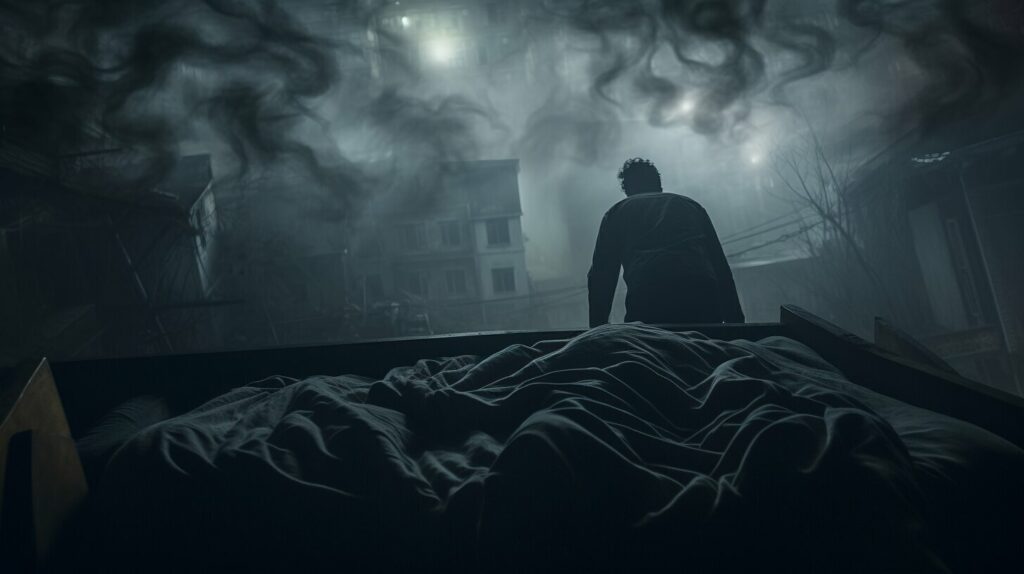
As we continue to research and understand sleep paralysis and lucid dreams, let us not limit ourselves to what we currently know. Let us embrace the unknown and explore the boundaries of our consciousness, unlocking the secrets of the universe one dream at a time.
Conclusion
In conclusion, it is clear that sleep paralysis and lucid dreams are not the same. While they share some similarities, such as being sleep-related experiences, they are distinct in many ways. Sleep paralysis is a state where an individual is unable to move, speak, or react during the transition between sleep and wakefulness. On the other hand, lucid dreams are conscious dreams where the dreamer is aware that they are dreaming and can control their dream environment.
Through personal experiences and scientific research, we have gained insight into these fascinating sleep phenomena. However, there is still much to be explored and understood when it comes to sleep paralysis and lucid dreams. As individuals, we may seek to experience these states for personal growth, control, or transcendence. As researchers and scientists, we can continue to push the boundaries of our knowledge and understanding of these mystical experiences.
Overall, the question of whether sleep paralysis and lucid dreams are the same has been answered. They are not. However, the discussion surrounding these sleep phenomena will undoubtedly continue for years to come.
FAQ
Q: Is Sleep Paralysis and Lucid Dreams the Same? Find Out Here!
A: In this section, we will explore the question of whether sleep paralysis and lucid dreams are the same. We will analyze the key differences between these two sleep experiences and provide a clear understanding of each phenomenon.
Q: What is Sleep Paralysis?
A: In this section, we will delve into the concept of sleep paralysis. We will discuss what it is, the potential causes behind it, and how it manifests during sleep. Understanding sleep paralysis is crucial for discerning its dissimilarities from lucid dreams.
Q: Exploring Lucid Dreams
A: In this section, we will introduce the concept of lucid dreams. We will define what they are, how they occur, and explore the unique characteristics of this phenomenon. Additionally, we will touch upon any potential connections between lucid dreams and sleep paralysis.
Q: The Key Differences
A: In this section, we will outline the primary differences between sleep paralysis and lucid dreams. We will explore their distinct characteristics, experiences, and how they are perceived by individuals who have had these encounters.
Q: The Common Ground
A: In this section, we will highlight any similarities that exist between sleep paralysis and lucid dreams. While they may be distinct in many ways, there could be certain aspects that overlap or have common features.
Q: Understanding the Relationship
A: In this section, we will delve deeper into the relationship between sleep paralysis and lucid dreams. We will explore whether one can lead to or trigger the other and if there are any underlying factors that connect these two experiences.
Q: Causes and Triggers
A: In this section, we will explore the potential causes and triggers for both sleep paralysis and lucid dreams. By examining these factors, we can gain insight into why some individuals may experience one or the other, or even both.
Q: Personal Experiences and Testimonials
A: In this section, we will explore personal experiences and testimonials from individuals who have encountered sleep paralysis and lucid dreams. By understanding their subjective perspectives, we can gain a better understanding of the unique nature of each experience.
Q: Scientific Research and Studies
A: In this section, we will explore scientific research and studies conducted on sleep paralysis and lucid dreams. By examining the findings and conclusions of these studies, we can gain a more comprehensive understanding of the two phenomena.
Q: Seeking Control and Transcendence
A: In this section, we will discuss the desire for control and transcendence that is often associated with sleep paralysis and lucid dreams. We will explore why individuals may seek to experience these phenomena and what they hope to gain from them.
Q: Exploring the Boundaries
A: In this section, we will push the boundaries of our understanding of sleep paralysis and lucid dreams. We will delve into the depths of these experiences, exploring the mysteries that surround them and questioning our current knowledge.
Q: Conclusion
A: In this final section, we will summarize the key points discussed throughout the article. We will provide a conclusion to the question of whether sleep paralysis and lucid dreams are the same, taking into account the differences, similarities, and personal experiences shared. Additionally, we will encourage further exploration and research into these fascinating sleep phenomena.

